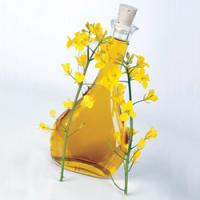Agricultural Holding August
Ukraine
Kyiv
Tel.: +38 066 101 3787
Mob.: +38 067 440-34-91
WhatsApp, Viber.: +38 067 440-34-91
E-mail: contact@august.in.ua
Winter rape
Agricultural Holding “August” welcomes new partners for cooperation. We offer to buy winter rape by wholesale at competitive price.
Winter rape is the most widespread valuable oil-plant that belongs to the Brassicaceae family.It is the source of high quality vegetable oil and forage protein, and essential forage crop. Winter rape as no other crop combines high potential seeds productivity (3,0 – 4,0 and more tons per hectare), high oil content (45 – 48%), protein (22 – 25%) , fiber (6 – 7%) and free-nitrogen extracts (24 – 26%). There is 3 – 4% of protein in the rape herbage.
The main objective of rape cultivation is oil. Rapeseeds oil is the main reason of rape wholesale.
This plant is known since ancient times. Mediterranean is considered to be rape’s motherland from where it expanded on India and other Asian countries. In Europe people started to cultivate rape since 16th century, and in Ukraine – since 1836. It leads among oil-plants of Brassicaceae family because of high oil content. Rapeseed oil is very close to olive oil by its eating qualities and taste. That is why more and more people today want to buy rape oil to use in everyday food.
High interest to winter rape and the desire to buy rape by wholesale are predetermined by its good adaptation to local conditions, especially in moderate climate and sufficient moistening, high productivity of modern varieties, increasing demand of rapeseed oil and high protein cattle fodder. Using proper technology it is possible to get 10 hundred kilograms of oil and 5 – 6 hundred kilograms of protein forage from 1 hectare. To compare, it is possible to get just 2 hundred kilograms of oil and 7 hundred kilograms of protein forage from 1 hectare of such valuable crop as soy.
Rape is wonderful honey plant. Bees can get 90 – 100 kg of honey from every hectare during 25 – 30 day of blossoming.
Everyone who deals with rape sale knows that rapeseed oil is well known analog of olive oil, and its sale is prevailing in many countries. It is a high-calorie product and widely used for food purposes: to produce margarine and mayonnaise, in cannery, cosmetics production, as an alternative to olive oil. The oil is extremely useful for human health from the point of view of nutrition physiology, rapeseed oil has preferences over other vegetable oils because it includes all physiologically essential acids in ideal ratio. That’s why many people all over the world decide to buy just this very oil. The composition of rapeseed oil includes a large number of glycerides of fatty acids that improve human metabolism, decrease the possibility of thrombogenesis, counter germination of hart and vascular diseases, decrease and regulate cholesterol level. Rapeseed oil attracts more and more attention as a source of renewable raw material for chemical industry and energy. During many years the range of its usage for technical purposes has extremely increased – starting from use as basic material for chemical synthesis and finishing with lubricants and advanced fuel types.
Rape is also successfully cultivated for herbage, silage and hay; there are 16 fodder units in 100 kg of herbage, each has 190g of digestible protein.
Rapeseed meal (presscake) and cattle cake which are resulted after extraction of oil form rapeseeds are valuable high protein cattle fodder. Output of rapeseed meal is 57%, sunflower – 38%, soy – 70%. It is close to soybean oil meal by protein (35 - 39%) and has higher energy value and equal by amino acids balance. In the course of 100 kg of rapeseeds processing, apart form 38 – 41 kg of oil, it’s possible to get 55 – 57 kg of cattle cake that contents 32 – 34% of protein with good amino acids balance and 10 – 18% of fat, or rapeseed meal, 34 – 38% of protein, and only 2 – 5% of fat. The protein composition includes amino acids essential for cattle – lisin, methionine, cyothin, threptophan, threopine. There are 90 fodder units in 100 kg of cattle cake. One ton of rapeseed meal or cattle cake helps to balance the protein of corn forage (8 – 10t) increasing the content of digestible protein from 80 to 110g in one fodder unit. Rape herbage is a valuable cattle fodder equal by protein concentration to legumes. During the harvesting in the beginning of rape blooming, from one hectare it is possible to get 40 – 60 tons of cattle fodder characterized by its richness, low fiber content and good digestibility.
From the agronomic point of view rape is a good predecessor especially for grain crops. It discharges the soil early, improves the structure and fertility of soil, decreases weed infestation. Cultivation of grain crops after rape guarantees raise of yielding in 10 – 15% without additional expenses increasing productivity of rotation and efficiency of crop science in general.
Unlike sunflower rape exhausts the soil slightly, improves its agrophysical features and phytosanitary condition. Return of crop residues of rape is equal to manure applying (15 – 20 t/hectare) and increases yielding of grain crops on 50 – 10 hundred kilograms per hectare.
In recent years efficient technologies of alternative fuel made of rape have been developing. Biodiesel is environmentally friendly fuel; it burns out without detrimental compounds.
In European Union biodiesel fuel is planned to be 5,75% of the general fuel volume by 2010. A valuable by-product – glycerin – results in the course of biodiesel production of rapeseed oil.
Fatty acids of rapeseed oil are used in production of soap, rubber, candles, varnishes, plastics. They easily resolve in natural environment. Manufacturers of synthetic detergents also will reorient to use rapeseed oil, in particular for production of powder detergents, solvents.
Paper, cellulose, board can be made of rape straw (from 2 to 6 t/hectare). 2 tons of paper can be made of rape that occupies 1 hectare field. Such technologies are successfully used in UK, Hungary, Spain, and Portugal. 10% of all cellulose in the world is made of alternative raw material.
RAPE
|
Specification |
% |
|
Moisture |
under 8 |
|
Foreign matter |
under 3 |
|
Erucic acid |
under 2 - 5 |

